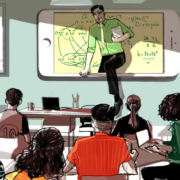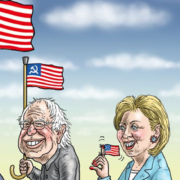The Teacher’s Guide to Helping Students Analyze Best Political Cartoon Artist
Introduction
Best political cartoon artist act as potent tools for engaging students in critical analysis and fostering discussions on contemporary political issues. Teaching students to interpret the nuanced messages embedded in these artistic creations is an important skill for nurturing informed and politically literate individuals. By understanding the strategies employed by the best cartoon artist, educators can effectively guide students toward developing a keen awareness of socio-political dynamics. This guide aims to equip teachers with valuable insights on how to facilitate students in comprehending and analyzing the works of prominent political animation artist.
Understanding the Essence of Political Cartoon Art
Before going into the strategies of the best political cartoon artist, it is important to grasp the essence of political cartoon art itself. Cartoons are not merely humorous sketches. They are visual commentaries on current events, societal issues, and political climates. Through clever symbolism, caricatures, and satirical elements, political comic artists encapsulate complex socio-political narratives in a single frame. As teachers, fostering a deep appreciation for the artistry and insight behind these cartoons can stimulate students’ critical thinking and cultivate a nuanced understanding of contemporary affairs.
The Evolution of Political Animation Artistry
Over the years, the landscape of political animation artistry has evolved, adapting to the changing dynamics of society and technology. From traditional pen-and-ink drawings to digital illustrations, the medium has expanded to encompass various artistic styles and techniques. As educators, introducing students to the diverse historical and cultural contexts of the best political cartoon artist can broaden their perspectives and encourage them to recognize the impact of visual rhetoric in shaping public opinion.
Key Elements in Analyzing Political Cartoons
When guiding students in the analysis of political cartoons. It is imperative to emphasize key elements that contribute to their overall message. Encouraging students to identify symbols, metaphors, caricatures, and irony within the artwork can facilitate a comprehensive understanding of the underlying political commentary. Moreover, discussing the socio-cultural context and the intended audience of the cartoon aids in unraveling the artist’s message and purpose, fostering a holistic interpretation of the artwork.
Exploring the Techniques of Leading Best Political Cartoon Artist
Prominent political comic artists employ various techniques to effectively convey their viewpoints and critiques. From employing exaggeration and distortion to utilizing powerful imagery and symbolism, these artists skillfully manipulate visual elements to provoke thought and spark conversations. Students can gain a valuable understanding of the diverse strategies utilized in the art of political commentary.
Integrating Political Cartoon Analysis into the Classroom
Incorporating political cartoon analysis into the classroom can foster an engaging and interactive learning environment. Organizing group discussions, debates, and creative projects centered around analyzing and creating political cartoons can encourage students to actively participate in critical discourse and express their viewpoints. Furthermore, integrating contemporary political cartoons into history, social studies, and civics curricula can cultivate a profound understanding of the intricate relationship between art, politics, and society.
Promoting Media Literacy and Civic Engagement
By nurturing students’ skills in analyzing the best political cartoon artist, educators play a pivotal role in promoting media literacy and fostering active civic engagement. Equipping students with the ability to discern biases, question narratives, and critically evaluate visual media empowers them to become informed and responsible citizens. Educators can instill a sense of agency in students, encouraging them to voice their opinions and actively participate in shaping the socio-political discourse of their communities and beyond.
Encouraging Creativity and Artistic Expression
Beyond the analytical aspect, exploring political cartoons can also inspire students to unleash their creativity and express their perspectives on pertinent societal issues. Encouraging students to create their political cartoons allows them to articulate their viewpoints and contribute to meaningful conversations. By embracing the artistic process, students can harness the power of visual storytelling to advocate for social change and raise awareness about pressing political matters.
The Artistic World of M. Scott Byers
Meet M. Scott Byers, the talented political cartoonist behind “Scott Byers Design.” Based in Austin, Texas, Scott is a published artist with an impressive portfolio, including the controversial “Two Views” column in the Austin American-Statesman, which he illustrated for a decade. While his website showcases just a glimpse of his work, Scott is open to new projects and commissions, offering his expertise in creating custom cartoons. If you have a project in mind, reach out to Scott Byers for a blend of fun and significance in his artistic creations.
Embracing a Dynamic Learning Experience
In conclusion fostering a dynamic and comprehensive learning experience centered around the analysis of political cartoons empowers students to develop critical thinking skills media literacy. and a profound understanding of the intricate interplay between art and politics. By immersing students in the world of the best political cartoon artist and encouraging them to actively engage with contemporary socio-political discourses. educators pave the way for a generation of informed and conscientious global citizens who can navigate the intricacies of the modern world with astuteness and empathy.


